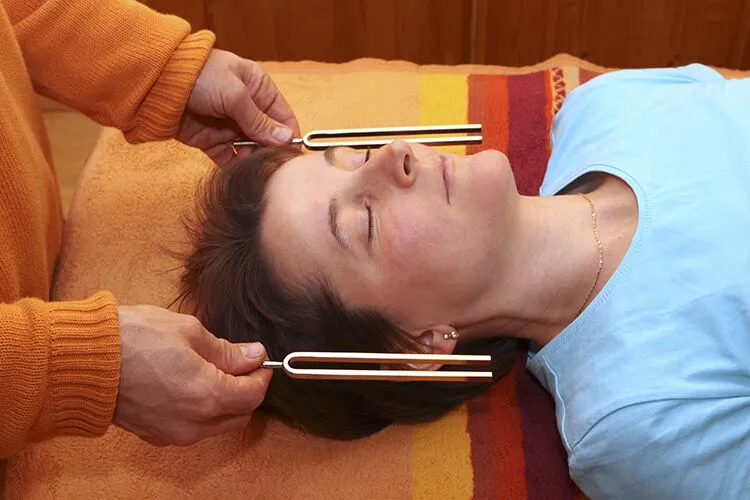Spiritual Awakening Meditation: A Guide to Higher Consciousness
Spiritual awakening Meditation is a transforming practice that leads to inner calm, increased awareness, and a profound connection with your true self. As you begin this journey, you will gain profound clarity, emotional equilibrium, and a fresh sense of purpose. In this blog post, we will look at how meditation promotes spiritual awakening, as well as the benefits, strategies, and ideas for making your practice more effective. See our upcoming retreats. What is Spiritual Awakening Meditation? Spiritual awakening meditation is a practice that aims to raise consciousness, remove ego-based constraints, and connect you with higher frequency energies. It is the journey of self-discovery that exposes deeper truths about life and existence. Learn more about it. Through this meditation, practitioners often experience: The Benefits of Spiritual Awakening Meditation Engaging in spiritual awakening meditation consistently brings numerous benefits to your mind, body, and soul. 1. Deep Inner Peace Meditation helps to silence mental chatter and brings profound tranquillity. This inner peace allows you to navigate life’s challenges with clarity and composure. 2. Enhanced Intuition With regular practice, it sharpens your intuitive abilities. You’ll begin to trust your inner voice and make decisions aligned with your higher self. 3. Greater Emotional Balance Meditation fosters emotional resilience by helping you process and release suppressed emotions. As a result, you cultivate greater self-awareness and compassion. 4. Higher States of Consciousness This form of meditation elevates your vibrational frequency, allowing you to tap into higher states of awareness and divine guidance. 5. Connection with Universal Energy It opens the gateway to cosmic consciousness. You’ll feel interconnected with the universe, leading to a more meaningful and purpose-driven life. Powerful Spiritual Awakening Meditation Techniques To experience the full benefits of this techniques , incorporating specific techniques can amplify your results. Learn more. 1. Mindful Breathing Meditation Start by sitting in a comfortable position. Close your eyes and focus on your breath. With each inhale, visualize divine energy entering your body. With each exhale, release stress and negativity. 2. Third Eye Activation The third eye, or Ajna chakra, is the centre of intuition and higher consciousness. To activate it, concentrate on the space between your eyebrows while meditating. Envision an indigo light expanding, guiding you towards spiritual awakening. 3. Guided Spiritual Awakening Meditation Listening to guided meditations designed for spiritual awakening can accelerate your journey. These often include affirmations, breathwork, and visualization exercises. 4. Mantra Meditation Chanting powerful spiritual mantras like “Om” or “So Hum” can elevate vibrational frequency and deepen your meditative state. 5. Loving-Kindness Meditation (Metta) This practice involves cultivating unconditional love and compassion. Visualize sending loving energy to yourself, your loved ones, and all beings in the universe. How to Deepen Your Spiritual Awakening Meditation Practice 1. Create a Sacred Space Dedicate a peaceful corner in your home for meditation. Decorate it with spiritual symbols, candles, and incense to enhance the energy. 2. Consistency is Key Practice spiritual awakening meditation daily. Even 10-15 minutes a day can yield profound results over time. 3. Incorporate Journaling After meditation, write down any insights, visions, or feelings that arise. This helps track your spiritual progress and deepens self-awareness. 4. Use Crystals for Amplification Crystals like amethyst, selenite, and clear quartz can enhance your meditation practice by raising your vibrational frequency. 5. Seek Guidance from Spiritual Teachers Joining the related groups or learning from experienced practitioners can accelerate your spiritual awakening journey. Common Signs of Spiritual Awakening As you deepen your meditation practice, you may notice signs indicating your spiritual awakening: Final Words Of Spiritual Awakening Meditation It is a successful technique for connecting with your higher self and the world. By practising continuously, you will gain deeper wisdom, emotional equilibrium, and a stronger sense of purpose. Whether new to meditation or an experienced practitioner, this journey will lead to significant personal transformation. Start your journey today and discover the power of higher consciousness. Allow your spirit to awaken to its full potential. Top services Hapé Ceremony: Spiritual Grounding & Cleansing Biofield Tuning: Sound Healing for Energy Alignment Energy Clearing Sessions: Releasing Negative Energies Sound Healing: Relax and Recalibrate Your Energy Foot Detox: Grounding & Cleansing Treatment Yoga and Meditation: Balance Body, Mind, and Spirit
Spiritual Awakening Meditation: A Guide to Higher Consciousness Read More »








